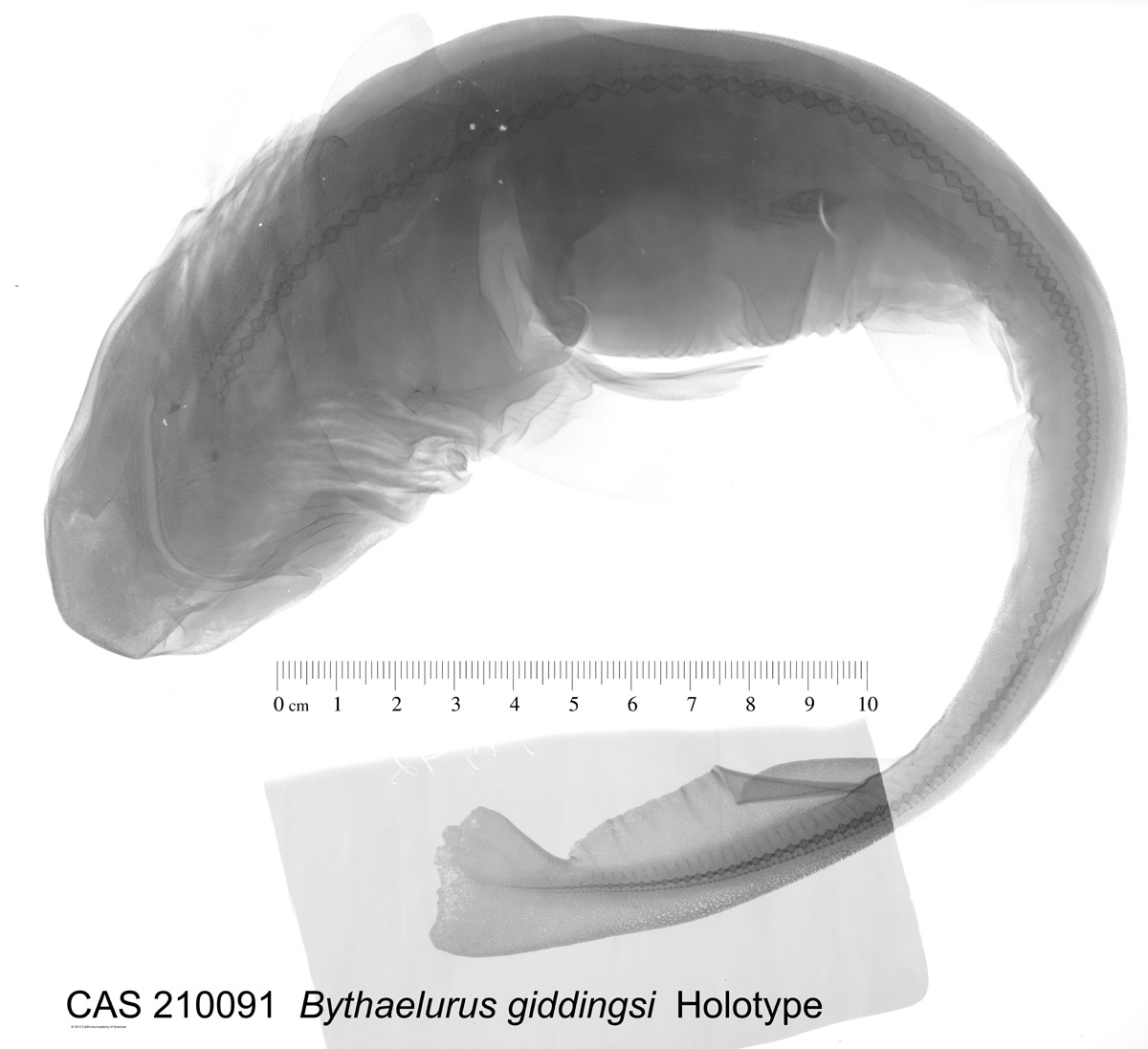Bythaelurus Giddingsi on:
[Wikipedia]
[Google]
[Amazon]
The jaguar catshark (''Bythaelurus giddingsi''), also known as the Galápagos catshark, is a species of catshark from the Galápagos Islands. The species was first described in 2012. This catshark is about a foot long when mature, and it is colored blackish-brown with an asymmetrical pattern of light spots.
 The species was first discovered in 1995 on an expedition to the Galápagos Islands led by John McCosker from the California Academy of Sciences. The purpose of the expedition was to film a documentary about the Galápagos Islands for the
The species was first discovered in 1995 on an expedition to the Galápagos Islands led by John McCosker from the California Academy of Sciences. The purpose of the expedition was to film a documentary about the Galápagos Islands for the
Taxonomy
 The species was first discovered in 1995 on an expedition to the Galápagos Islands led by John McCosker from the California Academy of Sciences. The purpose of the expedition was to film a documentary about the Galápagos Islands for the
The species was first discovered in 1995 on an expedition to the Galápagos Islands led by John McCosker from the California Academy of Sciences. The purpose of the expedition was to film a documentary about the Galápagos Islands for the Discovery Channel
Discovery Channel (known as The Discovery Channel from 1985 to 1995, and often referred to as simply Discovery) is an American cable channel owned by Warner Bros. Discovery, a publicly traded company run by CEO David Zaslav. , Discovery Channe ...
, which aired in 1996. Douglas Long was the first to notice the new shark species while he was processing the fish samples that were collected during the expedition. Though not yet formally described, the name Galápagos catshark was used in non-scientific shark literature for several years prior to the published description. The species was formally described as a new species in an article by McCosker, Long and Carole Baldwin which was published in '' Zootaxa'' in March 2012. As the authors did not propose a common name
In biology, a common name of a taxon or organism (also known as a vernacular name, English name, colloquial name, country name, popular name, or farmer's name) is a name that is based on the normal language of everyday life; and is often contrast ...
in their original publication, and also because there are several species of catshark from the Galápagos Islands, the name jaguar catshark was subsequently proposed, and later used in print. Weigmann, S., C.J. Kaschner, and R. Thiel. 2018. A new microendemic species of the deep-water catshark genus Bythaelurus (Carcharhiniformes, Pentanchidae) from the northwestern Indian Ocean, with investigations of its feeding ecology, generic review and identification key. PLoS ONE 13(12): e0207887. The scientific name honors underwater photographer and cinematographer Al Giddings, and the common name is in reference to the spotted pattern characteristic of the species, as well as its resemblance to the mythical jaguar shark in the Wes Anderson movie '' The Life Aquatic with Steve Zissou''.
Description
The jaguar catshark is blackish-brown on top with light spots arranged in an asymmetric pattern. Other species of catshark either lack spots, or else have a spots arranged in a single line. The bottom of the shark is lighter. It is about a foot (30 cm) in length, and thus an intermediate sized catshark. Its head is short, representing between 21% and 24% of the shark's total length. The front of itssnout
A snout is the protruding portion of an animal's face, consisting of its nose, mouth, and jaw. In many animals, the structure is called a muzzle, rostrum, or proboscis. The wet furless surface around the nostrils of the nose of many mammals is c ...
is blunt and round. It has two high, narrow dorsal fins and a low, broad anal fin
Fins are distinctive anatomical features composed of bony spines or rays protruding from the body of a fish. They are covered with skin and joined together either in a webbed fashion, as seen in most bony fish, or similar to a flipper, as se ...
. The pectoral and pelvic fin
Pelvic fins or ventral fins are paired fins located on the ventral surface of fish. The paired pelvic fins are homologous to the hindlimbs of tetrapods.
Structure and function Structure
In actinopterygians, the pelvic fin consists of two en ...
s have a somewhat triangular shape. It has a narrow, asymmetrical caudal fin.
Distribution and habitat
The jaguar catshark is known only from waters around several of the Galápagos Islands, includingSan Cristóbal Island
San Cristóbal Island ( es, Isla San Cristóbal) and named previously by the English as ''Chatham Island'', is the easternmost island in the Galápagos archipelago, as well as one of the oldest geologically. It is administratively part ...
, Darwin Island, Marchena Island and Fernandina Island. According to John McCosker, "since this catshark's range is restricted to the Galápagos, its population is likely limited in size, making it more susceptible than more widely distributed species." It has been found at depths ranging from . It lives over relatively flat areas with either sandy or a mixture of sandy and muddy substrates.
Feeding
Like other catsharks, the jaguar catshark lives near the sea floor and presumably eats fish and small invertebrates.References
{{DEFAULTSORT:catshark, jaguar jaguar catshark Galápagos Islands coastal fauna jaguar catshark